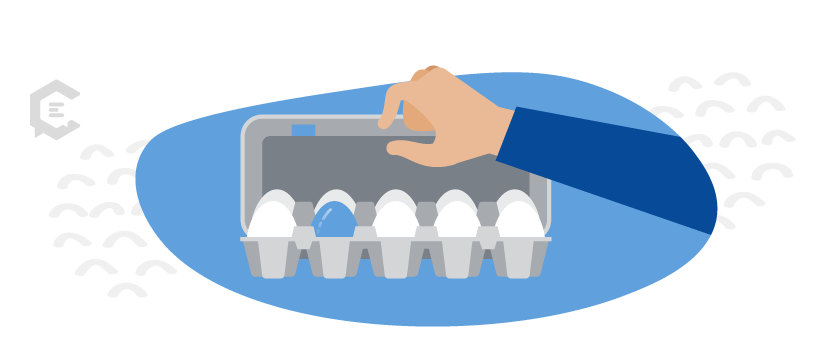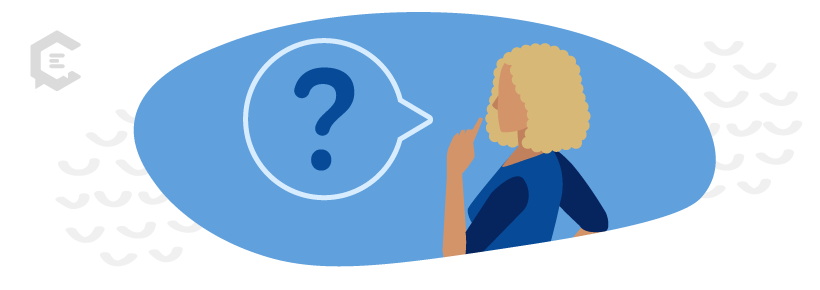What is the Paradox of Choice? A concept coined by American psychologist Barry Schwartz, the Paradox of Choice is a phenomenon where consumers who are confronted with too many choices might find it harder to make decisions or to be happy with the decisions they do make. As a result, sometimes offering fewer choices is better than offering more.
It could be said that we live in an era where, as consumers, we suffer from a gluttony of choices.
For example, say you sell all-natural peanut butter, and a member of your target audience is searching online for this very item.
A simple Google search results in countless options, from household names to unknown independent brands, leaving them unable to decide.
An increasingly rambunctious dialogue spins in their head:
“Oh goodness, which one do I pick?”
“This one is creamy and organic.”
“This one is made crunchy, but not as whole-peanut-chunky as this one.”
“That one costs less than this one, but it’s got fewer peanuts.”
As humorist Bill Watterson once quipped: “I’ll quit my job and devote my life to choosing peanut butter!”
Overwhelmed, some consumers walk away, deciding not to decide. Some consumers pick a default choice, likely a brand they have already bought, a phenomenon called the Ambiguity Effect. Some reach for the unknown, only to be dissatisfied by not really feeling like they made a choice.
Welcome to the crippling cognitive bias called choice overload, decision paralysis, or the Paradox of Choice.
Coining the term: Paradox of Choice
Psychologist Barry Schwartz’s 2004 book “The Paradox of Choice: Why More is Less” examined this dichotomy: On the one hand, folks in the West believe choice is integral to our democracy; the more choice, the better. On the other hand, Schwartz’s research found that too much choice may not always be good. Rather, it might cause people to pick options less beneficial for themselves.
As marketing content creators or business owners (or both), you are in the business of helping customers make better choices. Understanding the Paradox of Choice, a cognitive bias that creates friction in a consumer’s sense of purchasing power, can inform your own campaigns. This blog series aims to dive into the findings of different cognitive biases, so you, as marketing and content creators, can create nuanced marketing materials based on evidence-based consumer psychology.
What are the main aspects of choice overload?
- Generally, when given more options, people have a harder time deciding.
- Because they have a hard time deciding, they are more prone to being dissatisfied with their choice or more likely to regret the purchase.
- Having more choices raises interest, yet it also raises expectations. Those expectations seem to dim when a choice is made out of a larger variety than a smaller number of choices.
- There are some consumers who are satisfiers (they pick something that’s good enough), while others are maximizers (they must pick the best of the lot or the best of the best).
- On some high-stakes decisions, like health plans, the more options there are, researchers found fewer people participated in the programs.
- The bottomless task of making decisions on big and small things takes up time and mental energy, bombarding your customers’ senses, potentially making them feel anxious or depressed.
At face value, you might rush to Marie Kondo your product inventory and offer fewer choices to help your customers avoid choice overload, but before doing that, let’s look at another study done on choice published by Columbia University’s Sheena Iyengar and Stanford’s Mark R. Lepper: ‘When Choice is Demotivating: Can One Desire Too Much of a Good Thing?’
Another angle of choice overload
In three experiments, each aimed at finding out whether a choice resulted in demotivation, satisfaction, or frustration, Iyengar points out that having more choice doesn’t always result in that being worse and fewer choices being better.
There’s nuance to how we make choices. Some highlights are:
- Context matters: If a customer is in a physical grocery store, fewer choices work if it offers novelty. About Trader Joe’s, for example, Iyengar said in a “Freakonomics” podcast: “They don’t overwhelm you with choice, which is why you’re more willing to examine each novel choice.”
- An online platform, however, like Amazon, a huge choice is what e-shoppers expect. Yet to help consumers overcome the bottomless stock of products, their search engine narrows down choices exactly to what a consumer wants.
- If a brand offers new products from time to time, then that novelty is what draws their customers back to the brand to see what’s new. Yet, they also keep the number of items relatively sparse. Iyengar likens going to Trader Joe’s to a treasure hunt. She said: “When I walk into Trader Joe’s, it’s a variety-seeking exercise.”
- There are times a consumer is variety-seeking, willing to try and experiment with new products. And yet there are other times, they just want a consistent service or product.
- People who are clear about what they want are not as affected by choice overload.
Taking these extra nuances into consideration, perform a content audit on your own marketing content to see if you might have to correct for choice overload.
Questions to ask yourself:
- Do you have too many product categories and subcategories on your web page? Keep it simple, intuitive, and clear. Update the navigation, web copy, and user experience if needed to help prevent Paradox of Choice from happening on your site.
- Does your webpage have too much information? Does it delay the customer from the two essential goals of a website: selling goods and building your customer base? You want substance in your content that is concise, clean, and catchy, clearing as much friction from the purchase as possible.
- Do your web pages and social media platforms overwhelm your customers? Knowing where your customers are in terms of where they want to interact with you and how often helps determine how much information to provide. Being selective about social platforms might help you reach your customers in ways that matter more to them.
- How clear are you about what your audience wants from your products and/or service? Researching how your customers speak about your product gives you the language you can adapt for your marketing campaigns.
Helping your customers whittle their choices to the essential is a delicate balancing act. Yet, the more you do to reduce the Paradox of Choice and the stress of choice overload, the greater your chances of sealing the sale.
Need to simplify your web copy and improve your social media presence? ClearVoice can help. From concise web copy that will help customers make purchasing decisions to informative and entertaining social posts, we can handle all your content needs — and help your customers avoid the Paradox of Choice while we’re at it. Talk to a content specialist today to get started.






